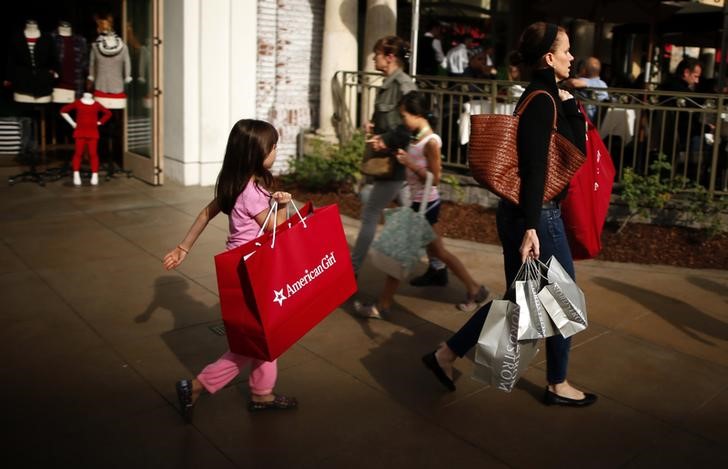By Lucia Mutikani
WASHINGTON (Reuters) - U.S. retail sales rebounded in July as households boosted purchases of automobiles and a range of other goods, suggesting the economy was growing solidly early in the third quarter and bolstering the case for a Federal Reserve interest rate hike.
While other data on Thursday showed a rise in new applications for unemployment benefits last week, the trend still firmly pointed to a tightening labour market.
"U.S. consumers are out there spending and driving a large part of economic growth. It means the Fed will be confident that the economy is still on fairly strong footing and supports the view that they could raise rates in September," said Luke Tilley, chief economist at Wilmington Trust in Wilmington, Delaware.
The Commerce Department said retail sales rose 0.6 percent last month, broadly in line with economists' expectations, and were unchanged in June, an upward revision from the previously reported 0.3 percent drop. May's data was also revised higher, adding to the report's upbeat tone.
Sales last month rose in most categories, with receipts at auto dealerships increasing 1.4 percent after falling 1.5 percent in June.
Excluding automobiles, gasoline, building materials and food services, retail sales rose 0.3 percent after a revised 0.2 percent gain in June. These so-called core retail sales, which correspond most closely with the consumer spending component of gross domestic product, were previously reported to have dipped 0.1 percent in June.
Stocks on Wall Street were trading higher, while U.S. Treasury debt prices fell. The dollar rose against a basket of currencies.
The retail sales data added to fairly strong July employment and small business confidence reports in suggesting steady economic momentum at the start of the third quarter. GDP grew at a 2.3 percent annual pace in the April-June period.
Q2 GROWTH MUCH STRONGER
It also added to June data on factory inventories and imports as well as upward revisions to May construction spending figures in suggesting that growth in the second quarter was probably much stronger than the government reported last month.
Prior to Thursday's data, economists were expecting the advance second-quarter GDP growth figure could be raised to at least a 3.0 percent pace.
In the wake of the retail sales data and another report from the Commerce Department showing a 0.8 percent jump in business inventories in June, Goldman Sachs (NYSE:GS) said it now expected GDP would be revised up four-tenths of a percentage point to a 3.5 percent rate. High inventories could, however, undercut growth in the third quarter.
The government will publish its second GDP growth estimate later this month. Given the steadily firming economy, many economists expect the Fed will raise its short-term lending rate in September for the first time in nearly a decade.
But weak inflation pressures and China's devaluation of its currency this week could make the U.S. central bank cautious about tightening monetary policy. Economists at BNP Paribas (PARIS:BNPP) estimate that a 10 percent drop in the yuan against the dollar could shave about one-tenth of a percentage point off inflation over 12 months.
A third report from the Labour Department showed import prices fell 0.9 percent in July.
"The Fed will see this (yuan devaluation) as a transitory factor," said Adolfo Laurenti, deputy chief economist at Mesirow Financial in Chicago. "But we are well aware that the inflation target set by the central bank has been missed for more than three years, which is the reason why some voting members would be comfortable to further delay hiking rates."
The Labour Department also reported that initial claims for state unemployment benefits increased 5,000 to a seasonally adjusted 274,000 for the week ended Aug. 8.
Though claims have risen for three straight weeks, they have for 23 consecutive weeks remained below the 300,000 threshold, which is associated with a firming jobs markets.

The four-week moving average of claims, considered a better measure of labour market trends as it irons out week-to-week volatility, fell to the lowest level since April 2000. The tightening labour market is steadily lifting household income, which is supporting consumer spending.